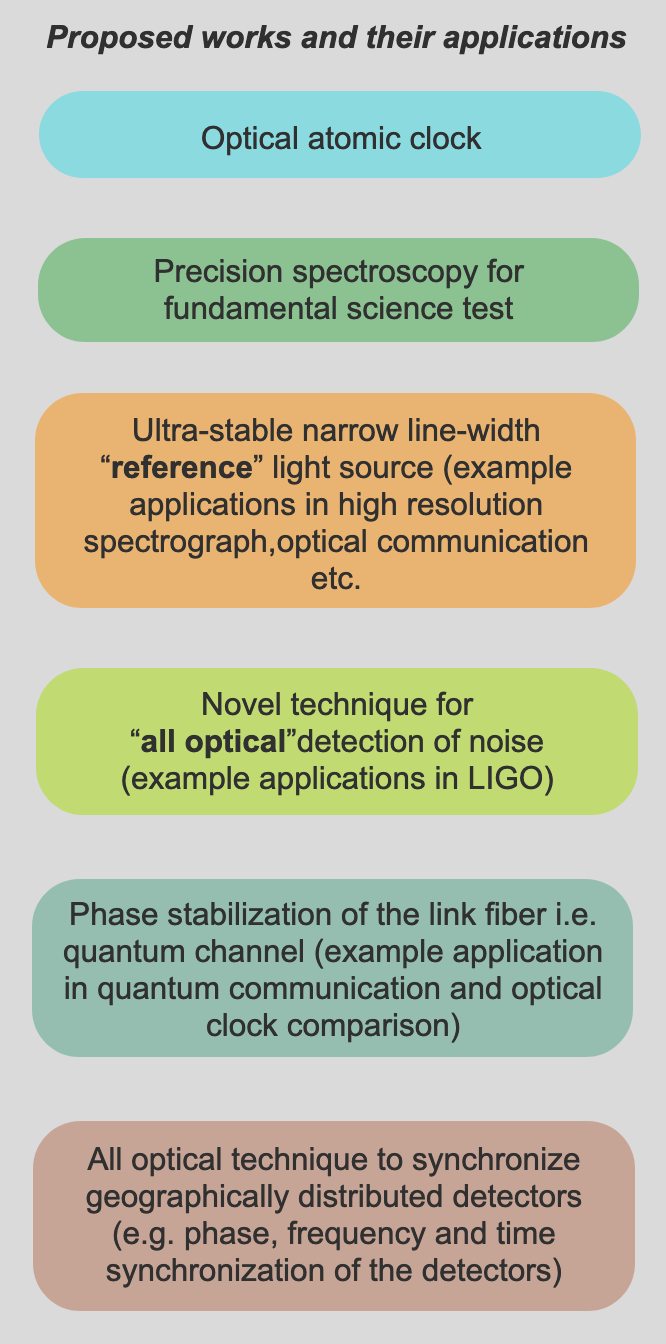"A single atomic particle forever floating at rest in free space" (H. Dehmelt, Nobel Prize in Physics, 1989)
would be the ideal object for precision measurement of atomic properties and for the test of
fundamental
theories.
- Klaus Blaum, and Gunter Werth, Molecular Beams in Physics and Chemistry.
 |
|||||||||||||||
|
|
|||||||||||||||
|
The PQM-lab is dedicated to support the National Quantum Mission and other similar initiatives of India those have national importance |
|||||||||||||||
Our research goals are,
In brief, the experiment shall comprise of a trapped ytterbium-ion (Yb+) optical clock based on its’ highly forbidden 4f 146s 2S1/2 - 4f13 6s2 2F7/2 electric octupole (E3) transition at 467 nm. The facility is constituent of four major work packages, such as,
|

|
||||||||||||||
 |
|||||||||||||||
|
Setting up the experiment and pursuing scientific studies using it need to work on multidisciplinary areas, such as, simulation, indigenous designing, precision fabrication, benchmarking of the developed instruments through proper test-measurement-and-calibration, elaborate setup in the field of lasers & optics, customized development of low-noise analog, digital and FPGA based electronics, ultra-high vacuum, mechanical & software development and so on. Upon development this will be a facility of national importance for strategic and scientific reasons.
A cohesive team, working on different aspects of the experiment together with external industry & academia collaboration is needed. We are part of the Quantum Enabled Science and Technology (QuEST), a flagship program of the Department of Science and Technology (DST), which provides the platform to work collaboratively. |
|||||||||||||||




